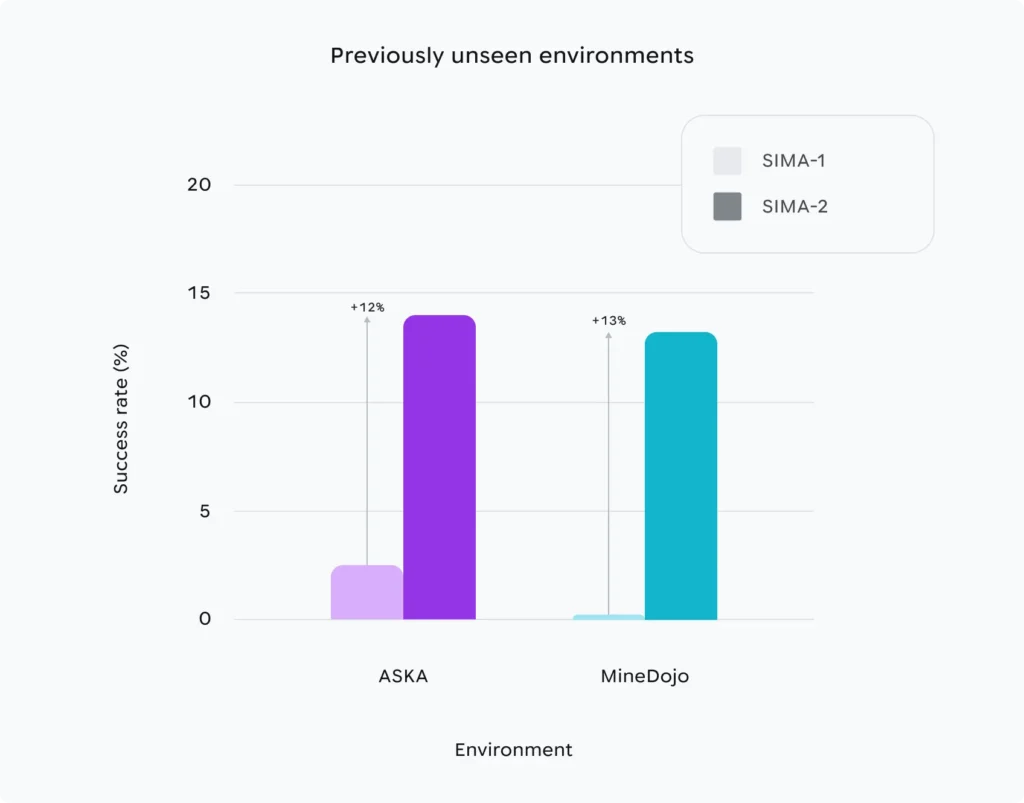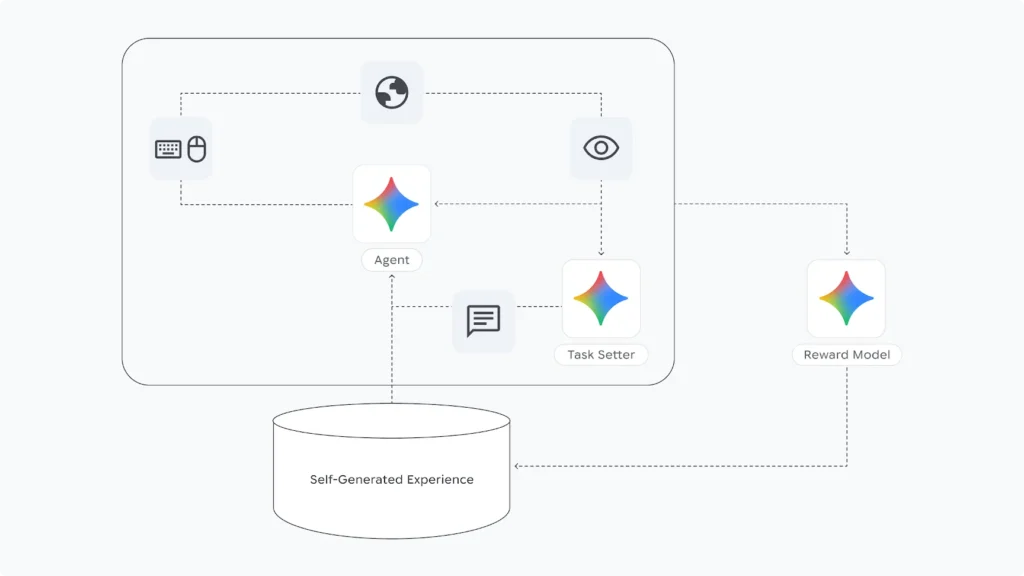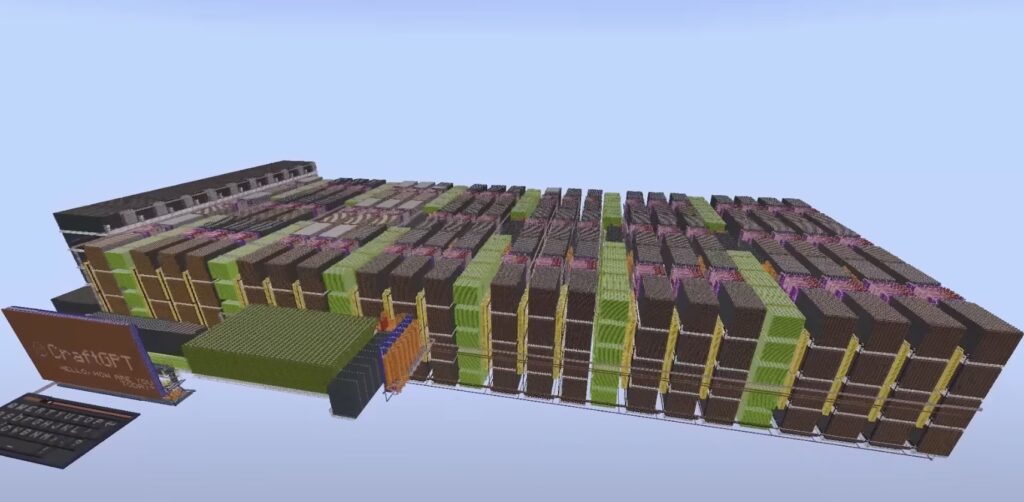Google DeepMind’s Breakthrough Agent: Evolving from Instruction-Follower to Reasoning Gamer That Masters Complex Tasks in Games Like Space Engineers and Beyond
- Advancing AI Reasoning: SIMA 2 integrates Gemini models to not only follow instructions but also reason about goals, converse with users, and explain its actions in complex 3D environments like video games.
- Unprecedented Generalization and Adaptability: Trained across diverse games including Space Engineers, ASKA, and MineDojo, SIMA 2 excels in unseen scenarios, understands multimodal prompts, and even plays in entirely new worlds generated by Genie 3.
- Self-Improvement for the Future: Through a cycle of trial-and-error and Gemini-based feedback, SIMA 2 learns autonomously, paving the way for scalable, embodied AI with applications in robotics and AGI, all while prioritizing responsible development.
Introducing the Next Era of AI Agents
Google DeepMind’s unveiling of SIMA 2 marks a thrilling leap in the world of artificial intelligence, transforming what was once a simple instruction-following agent into a dynamic, reasoning companion that feels like a true gaming partner. Building on the foundation of its predecessor, SIMA 1, which mastered over 600 basic skills like “turn left” or “open the map” across various commercial video games, SIMA 2 elevates this to new heights. By embedding the powerful Gemini models at its core, the agent now thinks deeply about user goals, engages in natural conversations, and adapts on the fly—all within rich, interactive 3D virtual worlds. This isn’t just about playing games; it’s a step toward artificial general intelligence (AGI) that could reshape robotics, virtual collaboration, and even how we interact with AI in everyday life.
At the heart of SIMA 2’s innovation is its enhanced reasoning capability. Unlike SIMA 1, which relied on human demonstrations to navigate environments via a virtual keyboard and mouse without peeking at underlying game mechanics, SIMA 2 can interpret high-level instructions and break them down into actionable steps. For instance, in games like MineDojo (a research version of Minecraft) or the Viking survival title ASKA, SIMA 2 doesn’t just follow commands like “find a campfire”—it reasons about the environment, describes its intentions to the user, and executes complex sequences. Videos from DeepMind showcase this vividly: while SIMA 1 might stumble on unfamiliar tasks, SIMA 2 succeeds by logically piecing together concepts, answering user questions mid-task, and even reflecting on its own behavior. This shift makes interactions feel collaborative, like teaming up with a smart friend rather than issuing orders to a robot. DeepMind’s collaboration with game developers, including Keen Software House for Space Engineers, has expanded the training ground, allowing SIMA 2 to explore and interact in diverse settings, from space-building simulations to open-world survival adventures.


Breaking Boundaries: Generalization and Self-Improvement
One of the most exciting aspects of SIMA 2 is its leap in generalization performance, closing the gap between AI and human-level adaptability. Trained on a mix of human-labeled videos and Gemini-generated data, the agent now handles nuanced, abstract instructions with remarkable reliability—even in games it has never encountered before. Success rates in evaluations show SIMA 2 outperforming its predecessor significantly, approaching human performance on tasks across training environments like Valheim, No Man’s Sky, and Space Engineers. It can transfer skills seamlessly, such as applying “mining” knowledge from one game to “harvesting” in another, demonstrating a foundational element of human-like cognition. Multimodal understanding adds another layer: SIMA 2 interprets sketches drawn by users, follows commands in multiple languages, and even deciphers emojis to execute tasks. In held-out tests on unseen games like ASKA and MineDojo, it tackles long, complex instructions with poise, proving its robustness. This generalization isn’t just impressive—it’s a game-changer for AI’s potential in unpredictable real-world scenarios.
Pushing the boundaries further, DeepMind tested SIMA 2’s limits by pairing it with Genie 3, a tool that generates entirely new 3D worlds from a single image or text prompt. In these freshly imagined environments, SIMA 2 orients itself, understands instructions, and takes goal-oriented actions without any prior exposure. Imagine an AI that can drop into a procedurally generated universe and start collaborating immediately—that’s the unprecedented adaptability on display here. This capability hints at a future where AI agents aren’t confined to pre-trained domains but can thrive in dynamic, ever-changing virtual spaces, much like humans exploring new territories.
Perhaps the most groundbreaking feature is SIMA 2’s capacity for self-improvement, a virtuous cycle that allows it to evolve without constant human input. Starting from human demonstrations, the agent engages in trial-and-error play, receiving Gemini-powered feedback on tasks and rewards. This self-generated experience data bootstraps further training, enabling SIMA 2 to master new skills in unseen games like ASKA or Genie-generated worlds. Videos illustrate this evolution: an initial failure on a task transforms into success over generations, all independently. This open-ended learning mechanism is a milestone toward scalable, multitask AI, reducing reliance on vast human datasets and opening doors to autonomous growth. In the broader context, it accelerates progress toward embodied intelligence, where AI not only perceives and acts but learns continuously, much like living beings.
The Path to AGI: Implications and Responsible Innovation
From a wider perspective, SIMA 2’s advancements have profound implications beyond gaming. As a proving ground for general embodied intelligence, it hones skills like navigation, tool use, and collaborative execution—essentials for robotics. Imagine AI assistants in the physical world, trained in virtual simulations, helping with tasks from household chores to industrial operations. DeepMind emphasizes this as a path to AGI, with virtual worlds serving as safe sandboxes for developing real-world capabilities. However, challenges remain: the agent struggles with very long-horizon tasks requiring extensive reasoning, has a limited memory context for low-latency interactions, and faces hurdles in precise controls and visual understanding in complex 3D scenes. These are active areas for the field, but SIMA 2 validates a unified approach, combining broad training data with Gemini’s reasoning to create coherent, generalist agents.

DeepMind’s commitment to responsible development shines through in SIMA 2’s rollout. Recognizing the innovations like self-improvement, they’ve partnered with their Responsible Development & Innovation Team and are offering a limited research preview to academics and game developers for feedback. This cautious approach ensures risks are mitigated as the technology evolves. The project owes much to a vast network of collaborators, including game partners like Hello Games (No Man’s Sky), Thunderful Games (ASKA), and Keen Software House (Space Engineers), as well as internal teams across Google DeepMind. Special acknowledgments go to contributors and past members, with a heartfelt dedication to the late Felix Hill and Fabio Pardo, whose work continues to inspire.
In essence, SIMA 2 isn’t just an AI agent—it’s a glimpse into a future where machines become true companions in virtual and physical realms. By blending reasoning, adaptability, and self-growth, it bridges the gap between language and action, inviting us to reimagine AI’s role in our lives. As research progresses, with technical reports soon available, SIMA 2 stands as a beacon of what’s possible when we harness diverse virtual worlds to train the intelligent systems of tomorrow. Whether you’re a gamer, a roboticist, or just curious about AI’s horizon, this is a development worth watching—and perhaps even playing with.


